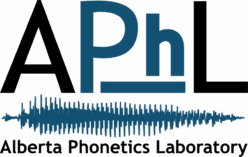Current Research Projects
-
Viennese dialect – Meidlinger L
The term “Meidlinger L” is a well-known feature of laterals in a regional Viennese dialect, specifically spoken in a working-class district named “Meidling.” While Meidlinger L has been discussed frequently in media, there are hardly any scientific studies that aim at defining this term. We conducted a large-scale perception study (N>4000) among the Viennese population…
-
Hengyang Xiang
Hengyang Xiang is spoken in Hengyang, Hunan Province of China, by an estimated 2.4 million speakers. Hengyang has six tones: a high-rising tone, a falling-rising tone, a low-rising tone, a low-level tone, a mid-level tone, and a low-mid tone. This study investigates the tonal system of Hengyang regarding pitch and voice quality, focusing on the…
-
Tone and voice quality in Hanoi Vietnamese
This study investigates the variation in voice quality and pitch in different tonal sequences in Hanoi Vietnamese, with the help from Tạ Thành Tấn at the Hanoi National University of Education. Hanoi (Northern) Vietnamese has a 8-tone system where tone and phonation are fused and with three glottalized tones: the mid-rising ngã tone C2 has…
-
Linguistic and social functions of voice quality
Voice quality is important not only in conveying indexical aspects of language, but also lexical information in languages that have tone and/or phonation contrasts (e.g., breathy, creaky vowels). The lower-level acoustic phonetic properties that are involved in manifesting such linguistic contrasts are also used as talker information, thus contributing to the different linguistic and social…
